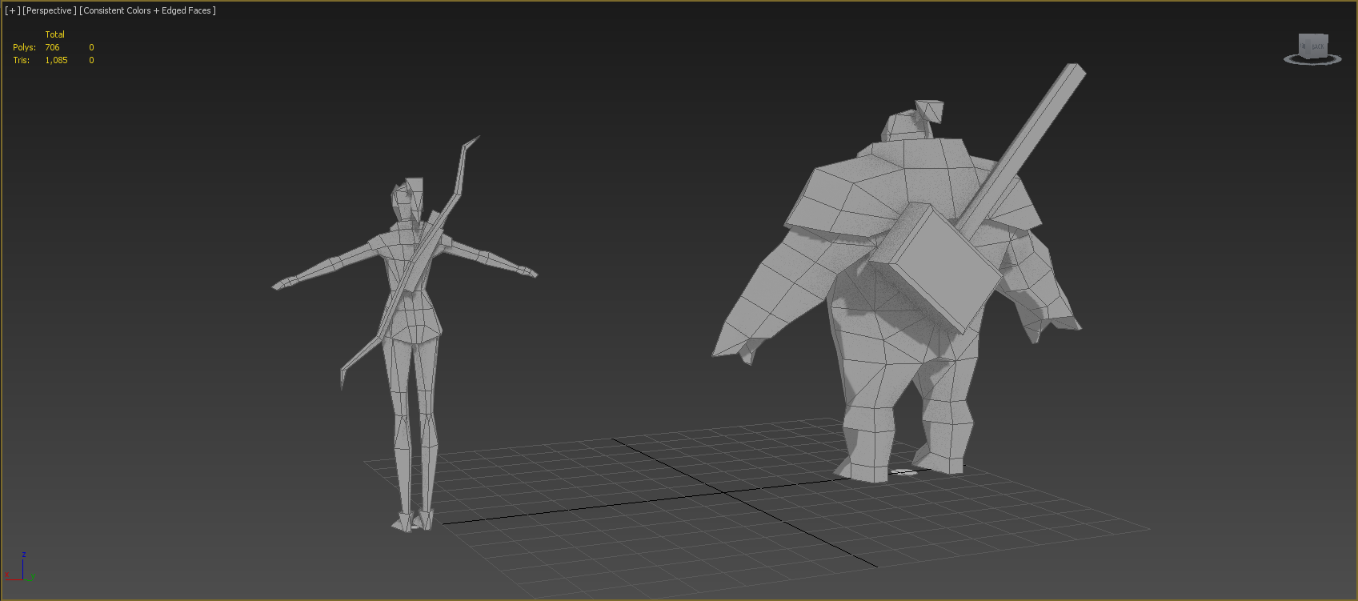The overall detail in the models was very basic. I was going to rely on the old school method of hand painted diffuse textures in order to create the illusion of depth and paint in fake ambient occlusion shadows. When rendering and viewing the models in the viewport I also switched to using the 'consistent colors' shader. This meant that the models would be lit as 'flat' and any illusion of lighting would come mostly from the painted textures. This is a pretty common way of working with textures for ultra low poly modelling.
Rigging for these characters as fairly easy going due to the low try count, however the low tri count meant that the characters were limited in how extreme there movements could be before deforming too much. Posed within reason I think the rigs work very well, and the characters can handle most basic maneuvers without any deformation issues.
When texturing I needed to use a texture size that was in line with the kind of tri budget I was using, so I went with the same low resolution 128x128 textures that Tommy Tallion used for his TF2 models. I painted them at a slightly bigger, but still very small size of 512x512. If I had painted them any bigger then by the time I resized much of the pixels would bleed into other areas of the UV map.
Each of the weapons also got their own 64x64 textures.
 |
| UVW sheets and painted textures at 512x512 |
Even though the textures are very blurred at this size the important thing was that the designs could still be read well from afar. I imagined these characters to be inhabitants of some kind of isometric style game world, and such would be viewed from afar and very small on screen.
here are some final renders of my characters with textures applied -
 |
| Ranger sheet |
 |
| Brawler sheet |
..and some basic poses -
As a quick conclusion, I'm pretty pleased with how these two turned out. Personally I feel that I achieved the goal of creating a dichotomous duo, with a consistent style and strong silhouettes. While at first I wanted to create a very high poly model, there was a lot to learn from creating characters under these kinds of technical restraints. It forced me to think solely about the strength of their overall design, and how I could best utilize my tri and texture budgets in order to convey their designs as best I could.
















